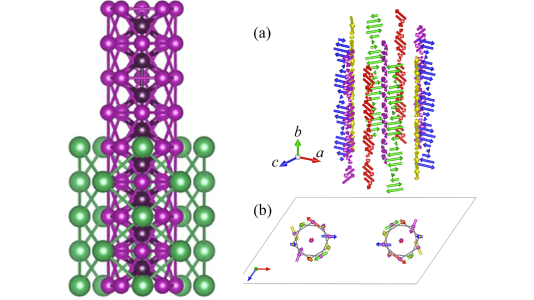
Scientific Achievement
Neutron and x-ray diffraction reveals the presence of coupled, incommensurate spin and charge density wave order in the quasi-1D compound, KMn6Bi5, in which superconductivity emerges when the SDW is suppressed.
Significance and Impact
Intertwined spin and charge order are common to many quantum materials. Our discovery opens novel avenues to study the impact of multiwave intertwined orders in quasi-1D systems with enhanced quantum fluctuations
Research Details
- Single crystal and powder neutron diffraction was used to study the temperature dependence of structural and magnetic order
- The structure of a spin density wave (SDW) was determined
- Single-crystal x-ray diffraction reveals satellite peaks in the AFM state with twice the q-vector of the SWD, indicating coupled spin and charge density waves
- X-ray diffraction shows significant magnetoelastic coupling, evidencing strongly coupled spin,charge, and lattice order
Argonne National Laboratory seeks solutions to pressing national problems in science and technology. The nation’s first national laboratory, Argonne conducts leading-edge basic and applied scientific research in virtually every scientific discipline. Argonne researchers work closely with researchers from hundreds of companies, universities, and federal, state and municipal agencies to help them solve their specific problems, advance America’s scientific leadership and prepare the nation for a better future. With employees from more than 60 nations, Argonne is managed by UChicago Argonne, LLC for the U.S. Department of Energy’s Office of Science.
The U.S. Department of Energy’s Office of Science is the single largest supporter of basic research in the physical sciences in the United States and is working to address some of the most pressing challenges of our time. For more information, visit https://energy.gov/science.